COR 2 Spectral Transmission
The data used to create these plots are available in the ASCII files :
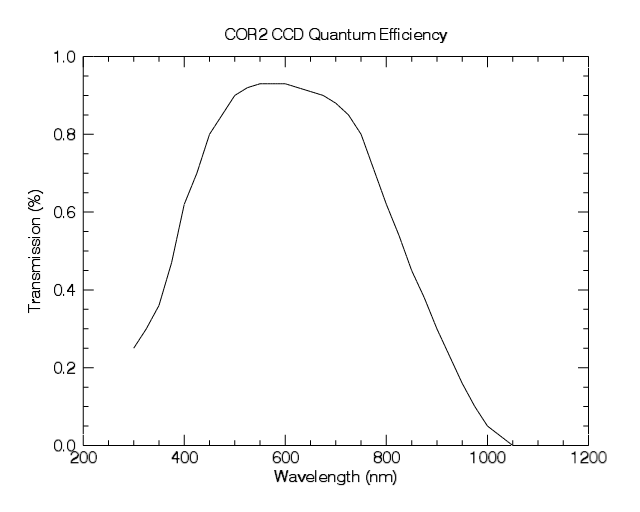
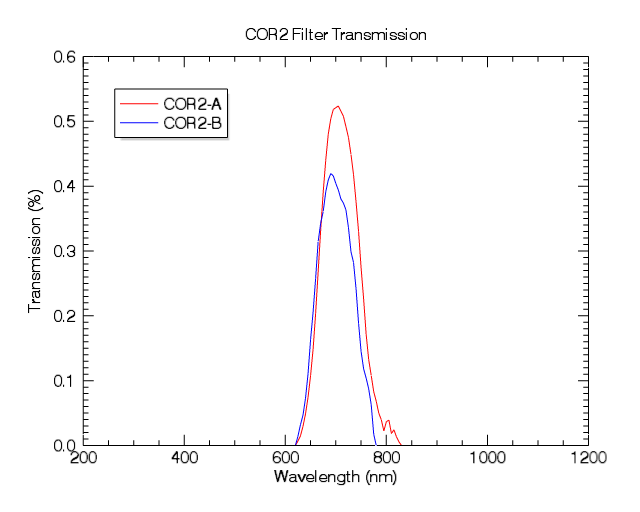
GEOMETRIC CALIBRATION
Pointing calibration was preformed on a sample of images with dates that spanned the entire SECCHI mission lifetime. The analyzed set of images contained 3 images from each month in which data has been taken over the entire mission. Three images for each month during which the COR 2 instruments have collected data composed the 45 image list. The set of 45 files used during pointing calibration analysis were 2048 x 2048, full resolution images. Our star detection method was preformed on this data set and true star locations were verified. The SOLARSOFT program COR 2_POINT.PRO preforms the required corrections.
VIGNETTING
The entire FOV of the COR 2 coronagraph is vignetted. The effects of the vignetting are largest in the inner FOV near the occulter but there is also vignetting at the outer FOV. The vignetting across the COR 2 image was measured pre-flight. These measurements were used to create the calibration image used in secchi_prep.pro to correct for the vignetting and flatten the intensity across the FOV.
The plot below shows the intensity of a star across the COR 2 FOV with and without (scaled) the pre-flight vignetting correction.
Update COR 2-B Vignetting : 2014-Jul-23
We found that the file originally added for SSW to correct the vignetting for COR 2-B was incorrect. A new pre-flight vignetting correction for COR 2-B has been added to SSW. This new file is now the default used by secchi_prep.pro.

The plots below show the intensity of four stars across the COR 2-B FOV. The intensities using the past correction are plotted with periods (.). The intensities with the new correction are plotted with plus signs (+). The intensity variation across the FOV in COR 2-B is now similar to that across COR 2-A. With the previous incorrect vignetting correction it was not.
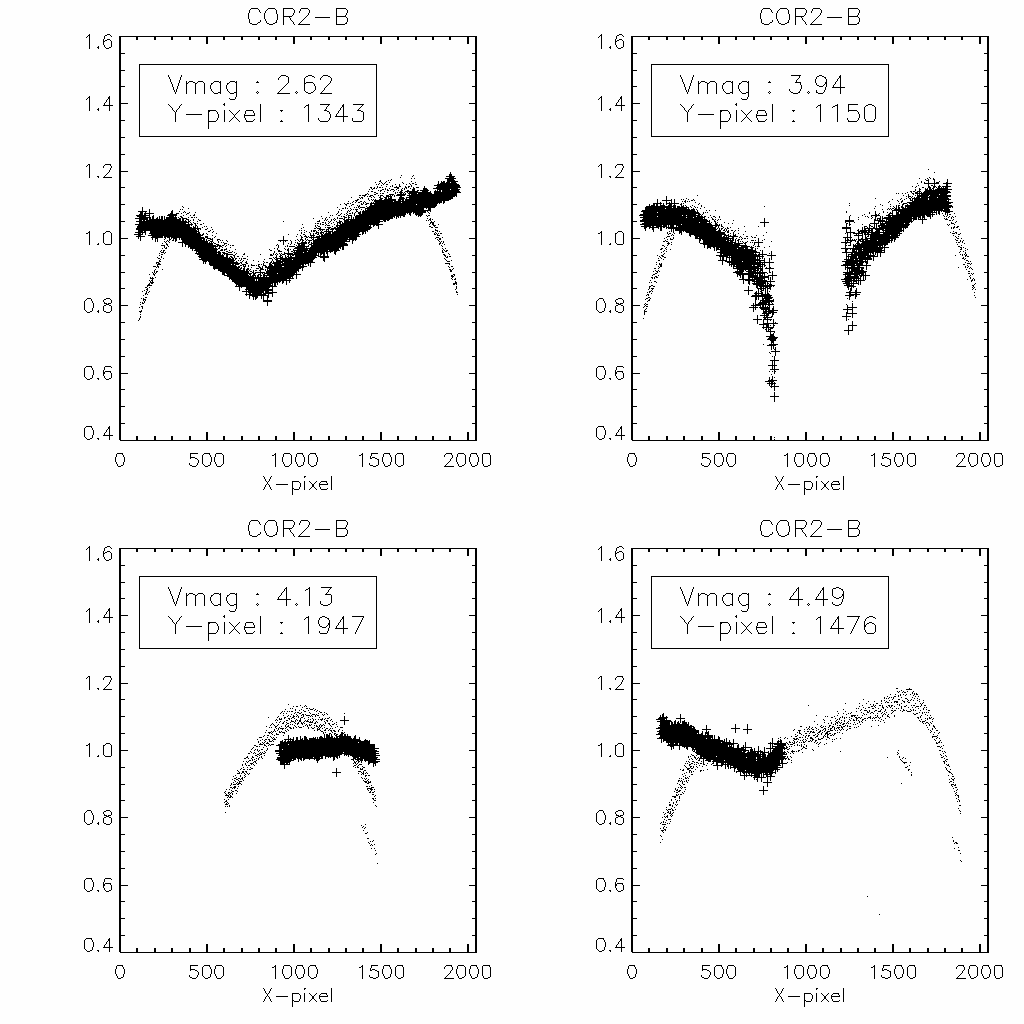
We are currently working on improving the vignetting correction for both COR 2-A and COR 2-B.
DEBRIS
Upon door opening, the coronagraphs aboard the SECCHI suites began to optically record cosmic ray and cosmic dust debris occurrences. Our calibration investigation included a recording of all images which contained transient evidence of either cosmic ray or debris particles. Viewing in below images is done as an inversion, thus black objects are really bright white. A list of COR 2 A or COR 2 B flagged images can be found using the SCC_CHECK_BAD.PRO SOLARSOFT program.
upper right: cosmic ray
upper left: particle debris
lower right: missing pixel information
lower left: mixed processing with different imagers (EUVI,COR 1,HI 1,HI 2)
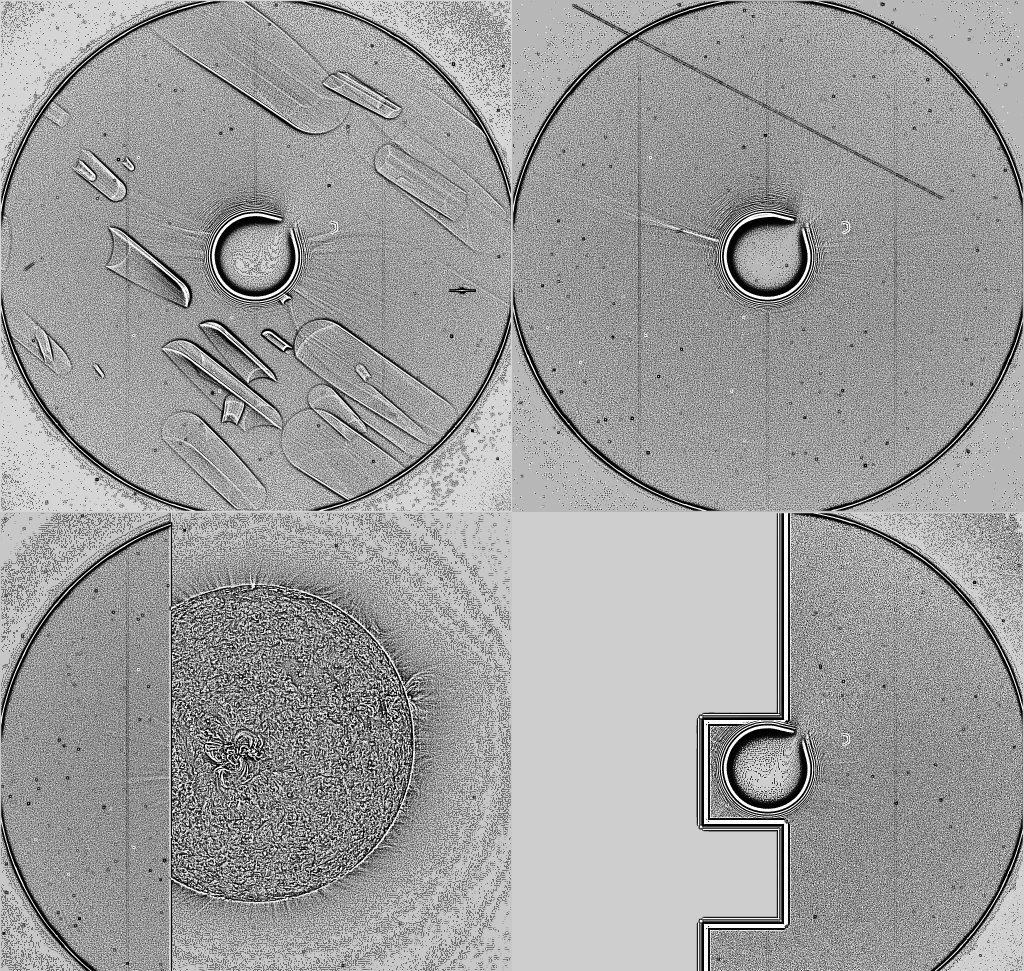
COR 2 SUNCENTER
By default, the SECCHI_PREP procedure calls COR 2_POINT.PRO for COR 2 images, which looks for the latest Guide Telescope (GT) data in raw Level-0 telemetry files, which currently are only at NRL and the SSC. If these files are not found, you may see an error like:
% SCC_SUNVEC: Warning: no matching ptp files in /a/2010/02, i.e., no jitter
correction
The Level-0.5 FITS files do contain a GT-corrected location for sun-center, which can vary about +/- 0.04 pixels on short time-scales (jitter) and 0.15 pixels over a year. A comparison of X and Y values for sun center during 2009 is shown below:

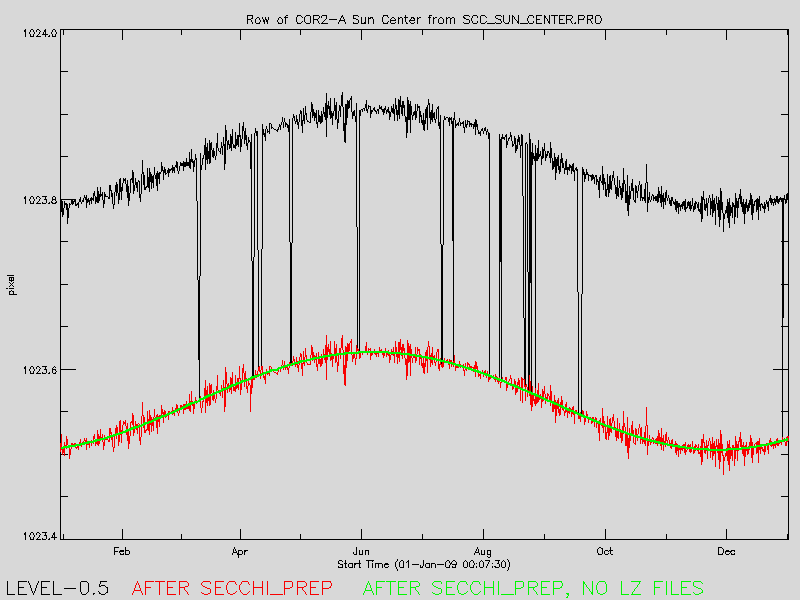
The average variation from image to image (jitter) is on average about 0.007 pixels (0.097 arcsec) in absolute sun center location in the image:
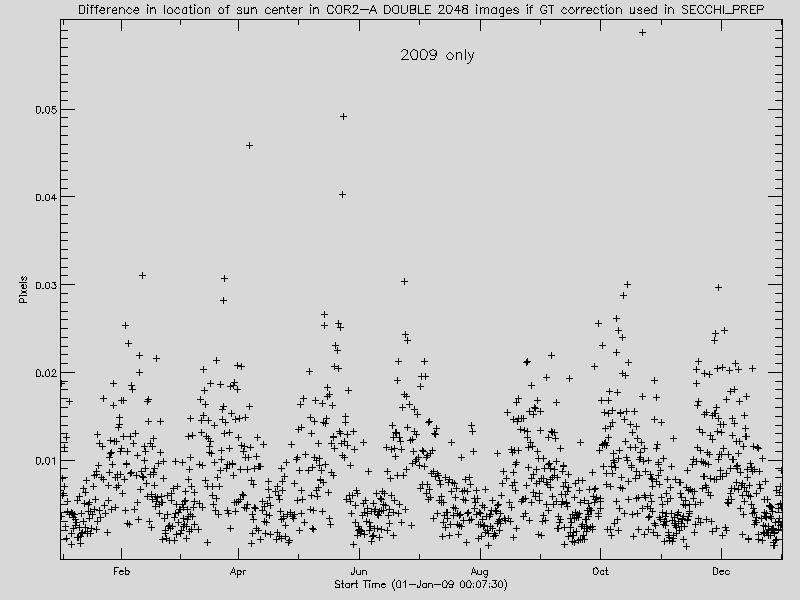

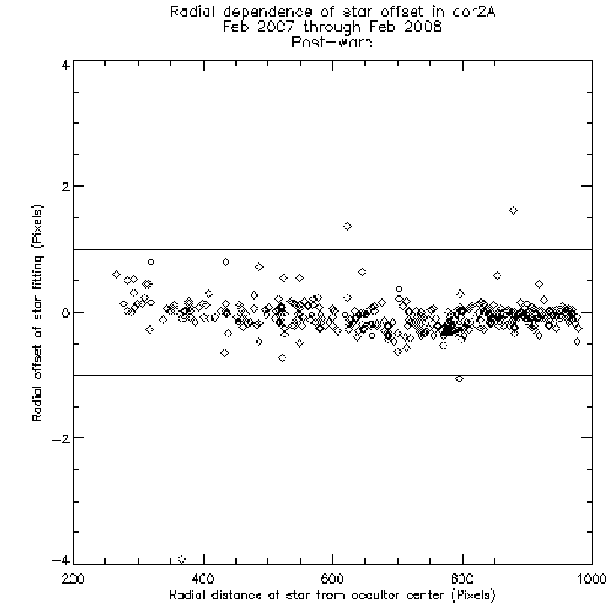 Plot of COR 2 A pointing and distortion correction accuracy
Plot of COR 2 A pointing and distortion correction accuracy Plot of COR 2 B pointing and distortion correction accuracy
Plot of COR 2 B pointing and distortion correction accuracy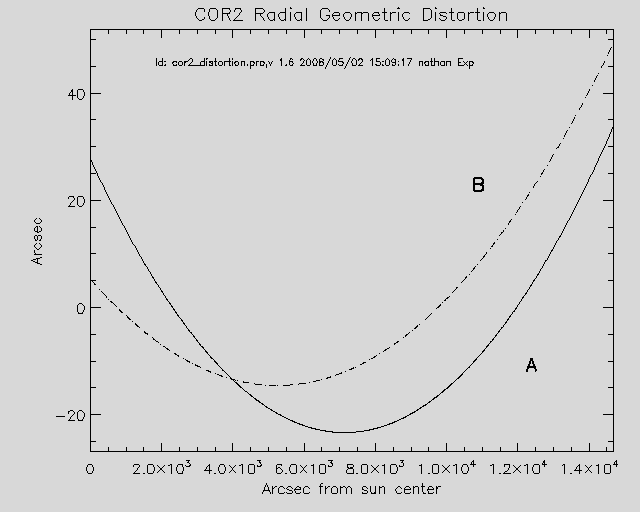 Plot of COR 2 distortion for A and B
Plot of COR 2 distortion for A and B